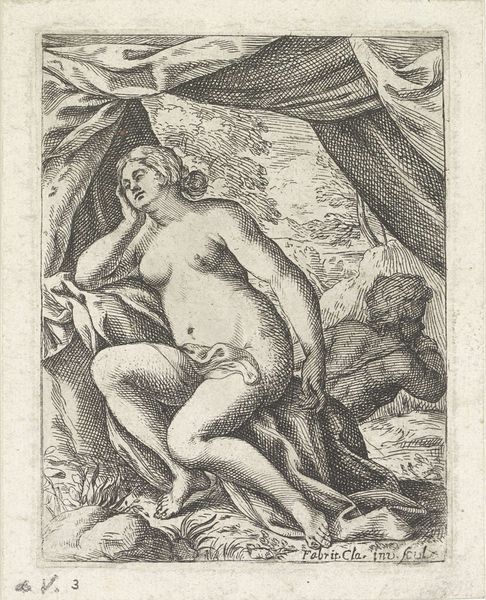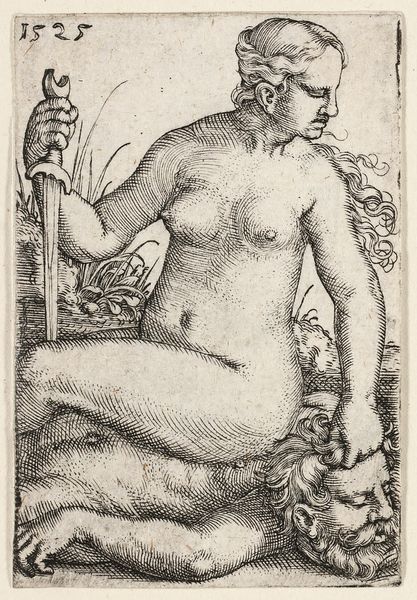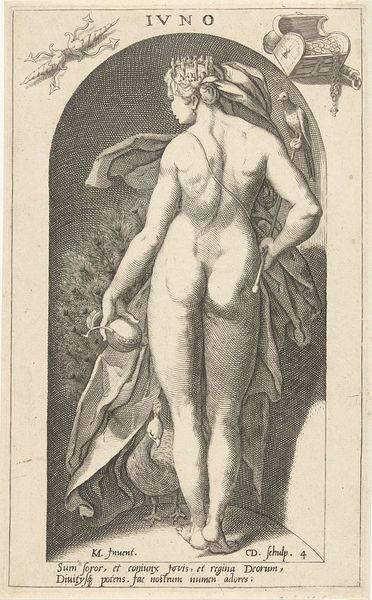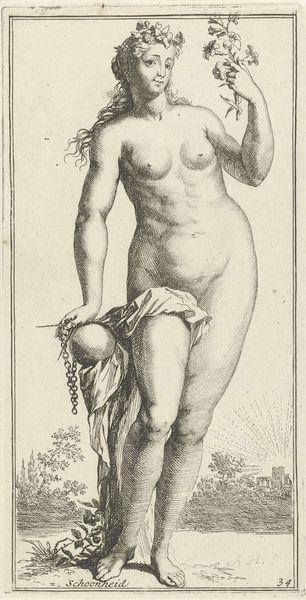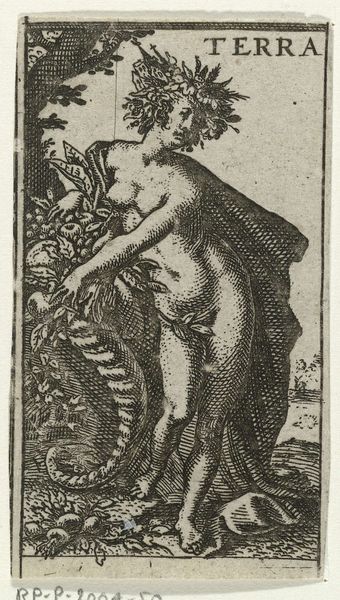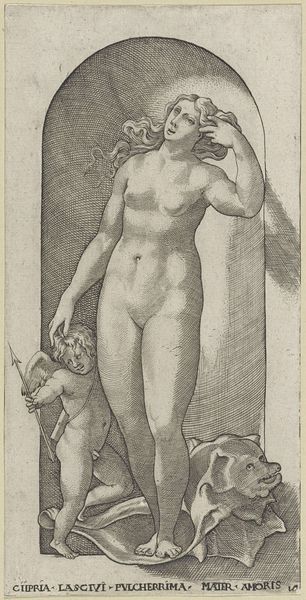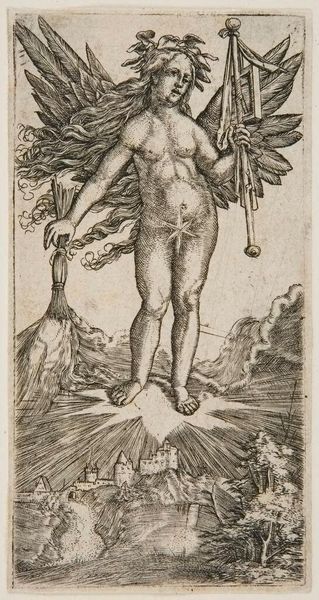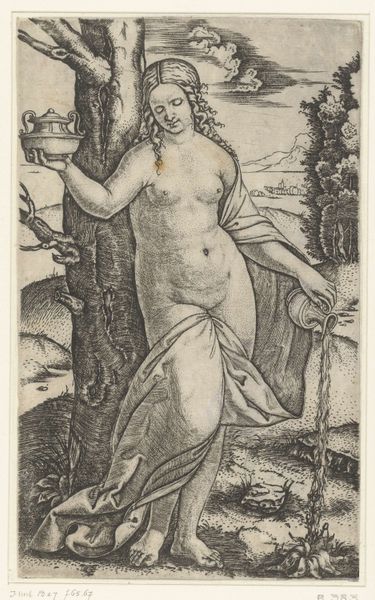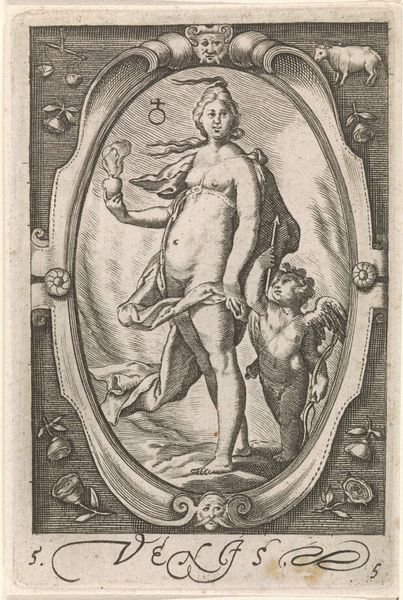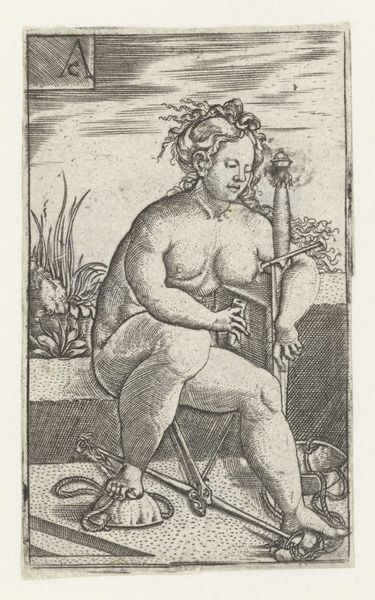
engraving
#
portrait
#
old engraving style
#
mannerism
#
figuration
#
limited contrast and shading
#
history-painting
#
italian-renaissance
#
nude
#
engraving
Dimensions: height 74 mm, width 33 mm
Copyright: Rijks Museum: Open Domain
Curator: The Italian Renaissance comes alive in this engraving from the Rijksmuseum, "David met het hoofd van Goliath," attributed to Monogrammist AC and dating from 1520 to 1562. Editor: The contrast! So stark, almost severe. Yet David seems remarkably serene, standing nude, casually holding Goliath's head. It is kind of disturbing and strangely detached. Curator: Indeed. Let's consider the labor involved in producing such a piece. Each line, etched with incredible precision into a metal plate. We see this interplay of material and the social implications of that labor of artistic creation. Editor: I see David as a symbol of power overturning injustice. This print obviously references the biblical narrative, but consider also how it speaks to gender, sexuality, and perhaps most boldly, the flaunting of male invincibility during this very conflicted period in European history. Curator: The emphasis on classical forms during the Renaissance shaped not only the bodies depicted, but the very tools and processes used to create art. Look closely at the texture, how it mimics classical statuary, rendered not in marble, but ink. The economic implications are right there in that conversion of means. Editor: And I see the social ramifications of such an image! This David embodies the Renaissance obsession with idealized masculinity but placed against a landscape fraught with religious tension. We can deconstruct that heroic pose and expose the anxieties beneath the surface— the artist, perhaps, grappling with issues of authority and social disruption. Curator: So, seeing the historical methods, how those informed the meaning of this work can change the audience and what each one of them see depending on those. Editor: Absolutely. By intersecting the historical narrative with the formal qualities, we unearth not just art history, but also history. I mean how those are affected depending on the individual.
Comments
No comments
Be the first to comment and join the conversation on the ultimate creative platform.
